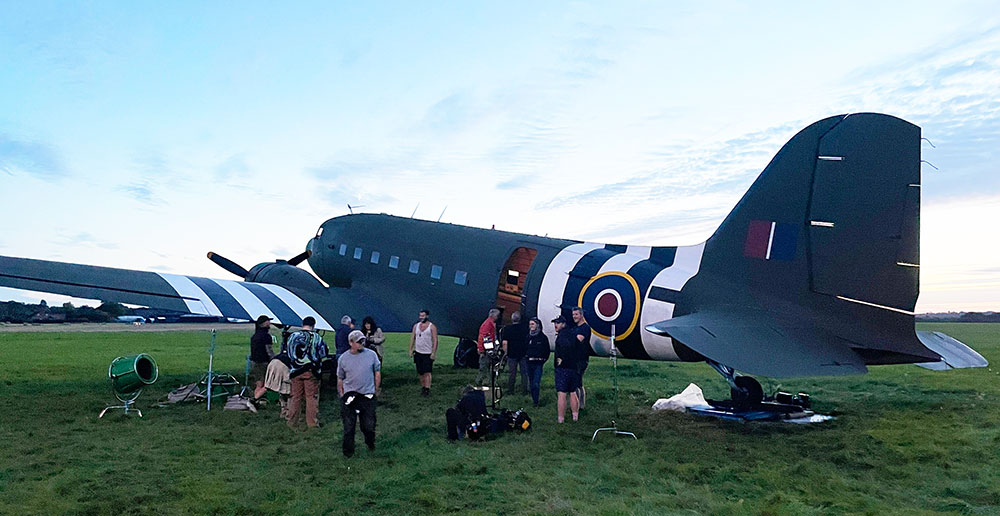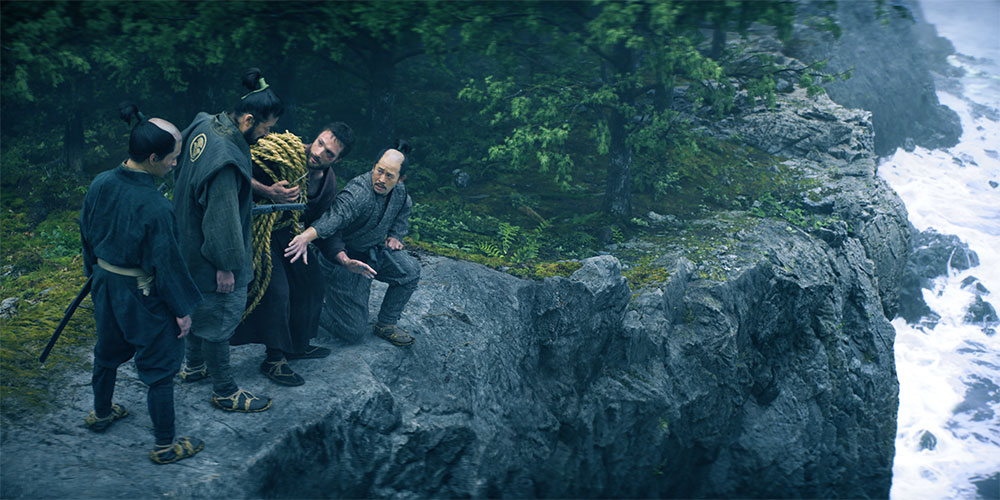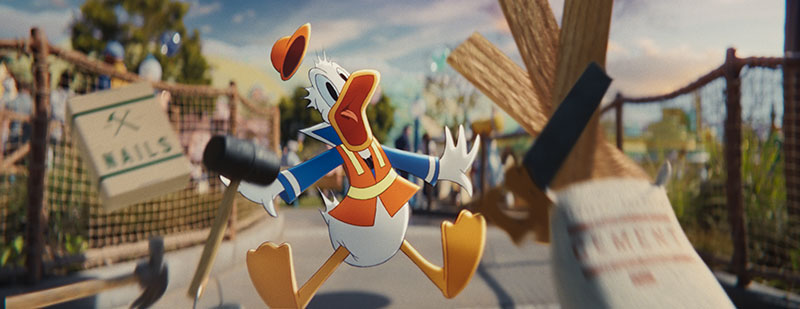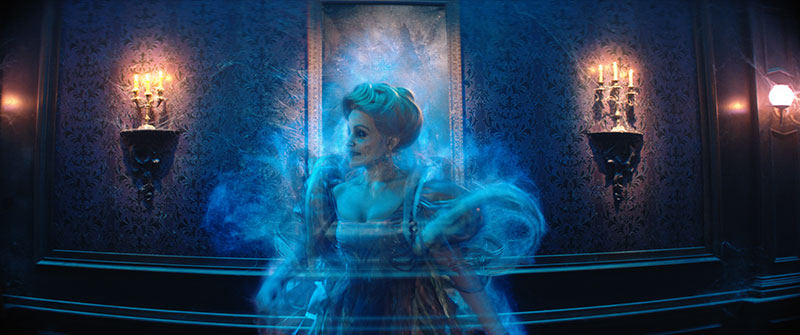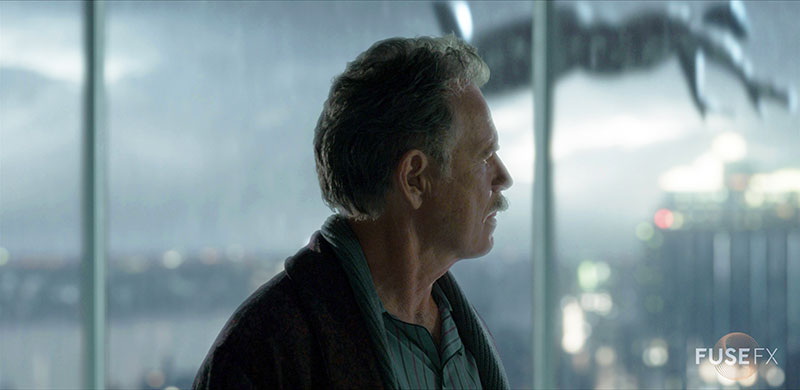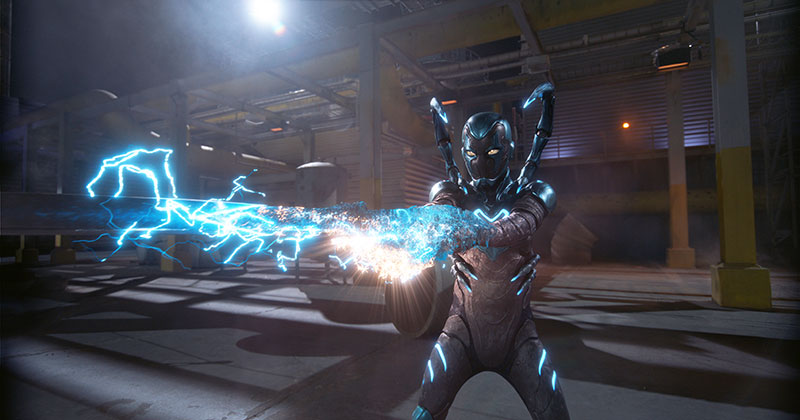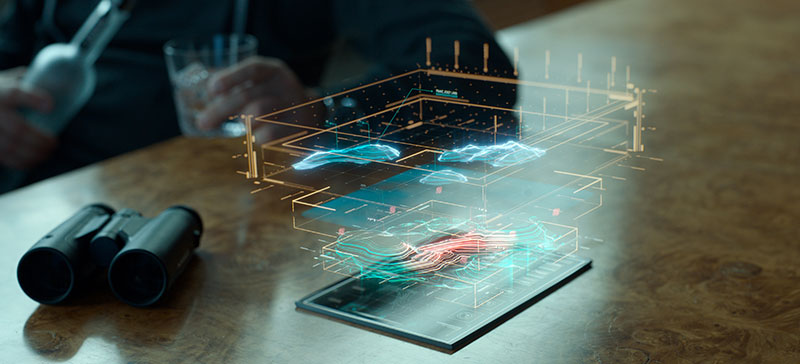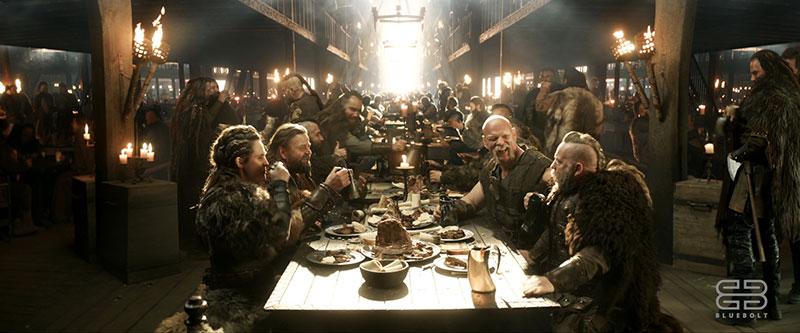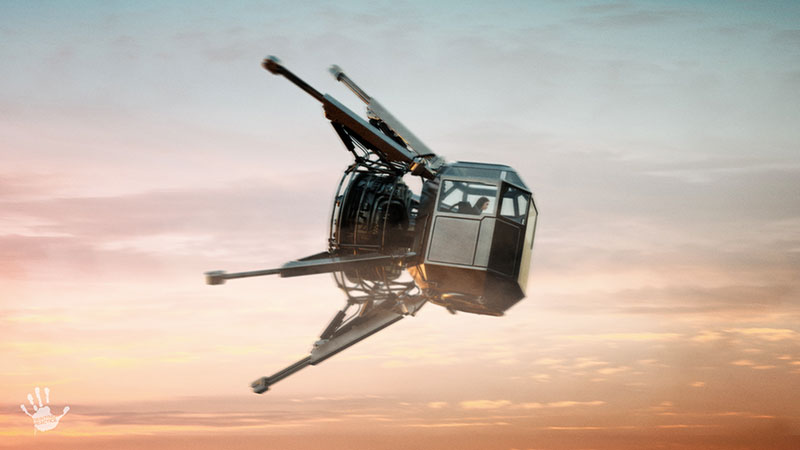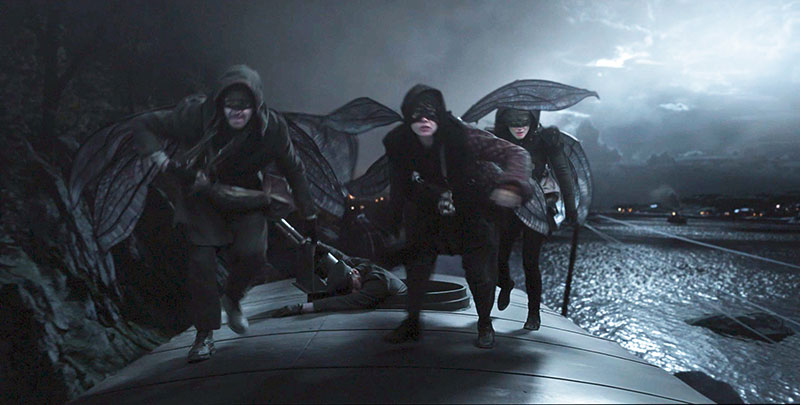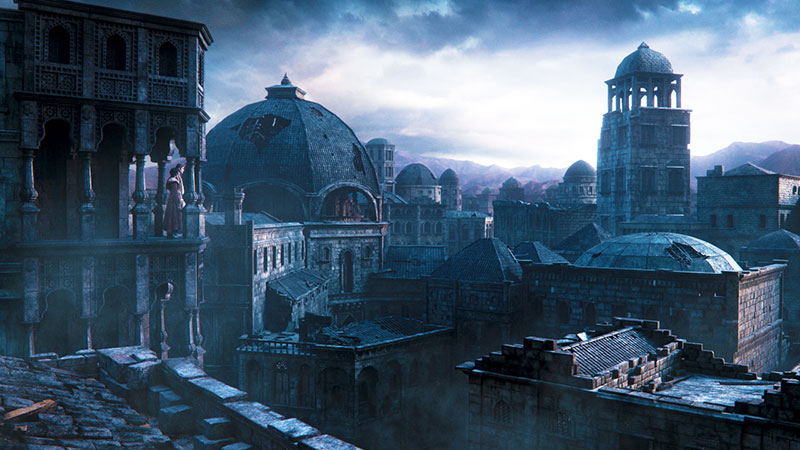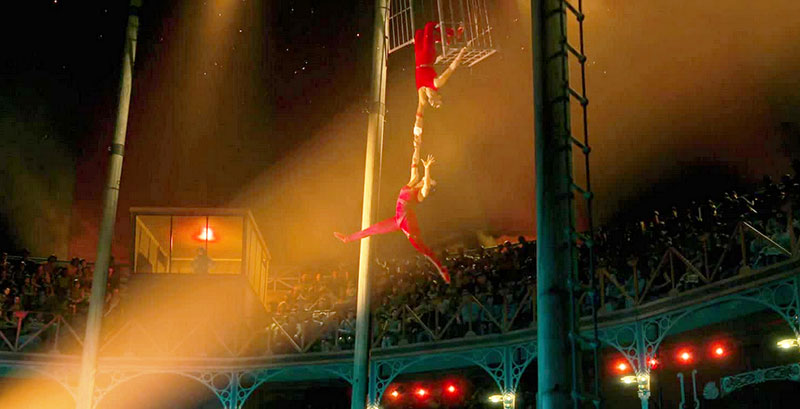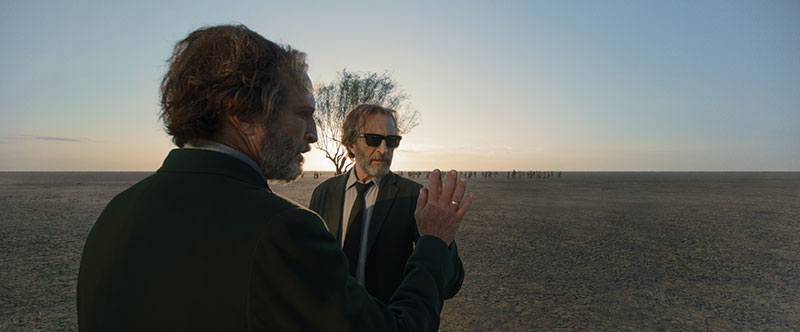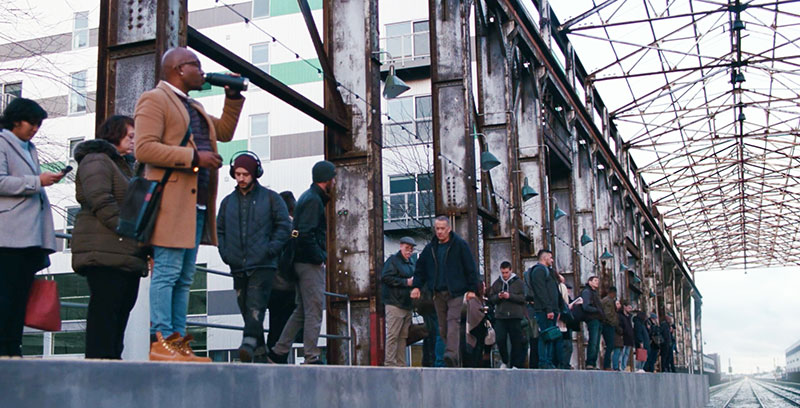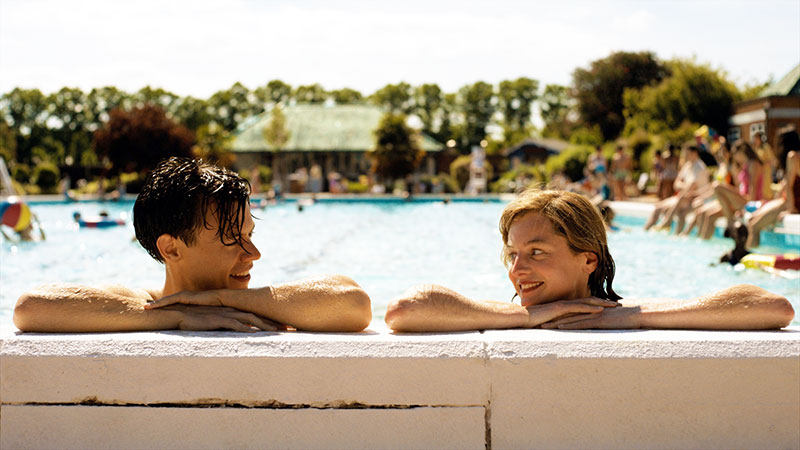Baseblack produced intriguing and beautiful effects in ‘Harry Potter and the Deathly Hallows Pt 2’ -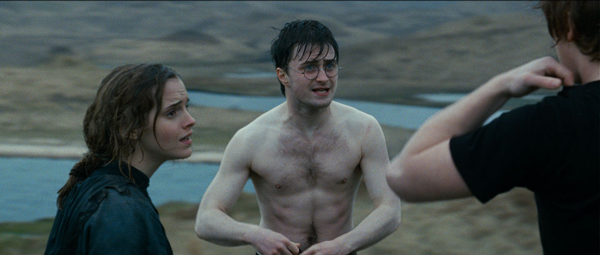
from the ghostly Grey Lady to the Golden Snitch to the demise of Bellatrix LeStrange - helping to
bring the series to a dramatic finish.More Harry Potter FX- See the Cover Feature
in DMW No 136 'Dragons Live Forever'.
 |
|
| Back to Shell Cottage When ‘Harry Potter and Deathly Hallows Part 1’ reached cinemas in late, the team at Baseblack was working on Part 2 with their VFX Supervisor Matthew Twyford, Co-Supervisor Rudi Holzapfel and Producer Kate Phillips. The final film begins at Shell Cottage where Harry mourns his friend Dobby. Baseblack placed the interior set on the coastline, replacing the green screens in both directions with views of the beach and sand dunes shot by the production while they were on location. When the friends decide to return to Diagon Alley with the goblin Griphook, they travel via a four-way apparition created by CG Artist Will Correia. He developed textures for the apparating characters in Photoshop from a combination of the plate photography, reference pictures supplied by production and some original repainting, which he then reprojected onto simple gingerbread type models, rigged to deform and animate as required. All animation was completed inside Maya and rendered with mental |
|
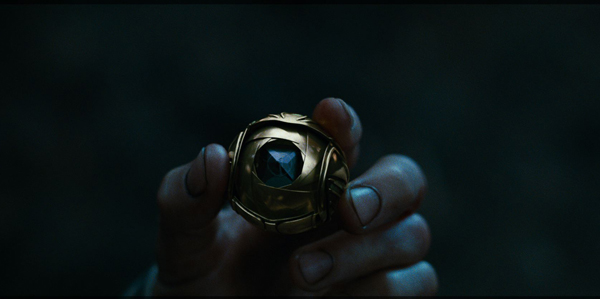 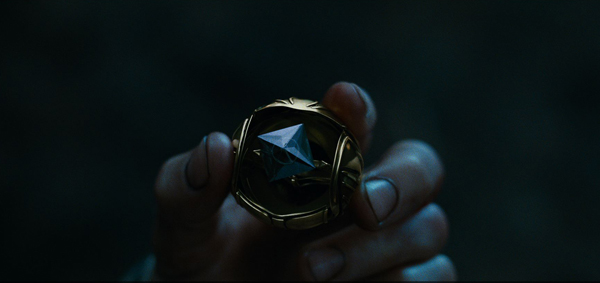 |
|
| Stitched Up When the heroes leap from the back of Gringotts’ dragon after their escape from the bank, they fall into a lake set in a Scottish landscape. The sequence was shot with the actors in a tank on a green screen stage, and Baseblack added the environment and lowering sky, which needed complex keying and grading in Nuke with a combination of Nuke and Baseblack proprietary nodes to create convincing dark murky water and flat exterior lighting to match the live-action. However as the three climbed from the lake, the shots became more challenging as the camera swung 720 degrees around the actors in several very long, fast moving takes shot on a cable-cam around a green-screen set piece in Leavesden. Having been provided with reference plates of mountains and lakes shot on location in Scotland, CG Supervisor Fred Sundqvist’s team stitched the photographic elements into a series of 24K panoramas that could be reprojected onto proxy geometry at different levels to allow visible parallax as the camera moved restlessly around. This included blending multiple plates of water together to create the illusion of a seamless lake surface moving behind them. Compositors Peter Farkas and Sarah Juniper integrated the live-action plates into the created environment, which included water interactions as the characters emerged from the projected lake surface and blending the burnt out summertime grass of the live-action set with the lusher spring grass of the background plates. “The separate water plates were overlapped and hand-stitched with selective blending, frame by frame wherever a seam was visible in a shot. The panoramas were carefully designed to limit the amount of visible seams. The stitching and compositing were completed inside Nuke,” said VFX Producer Kate Phillips. |
|
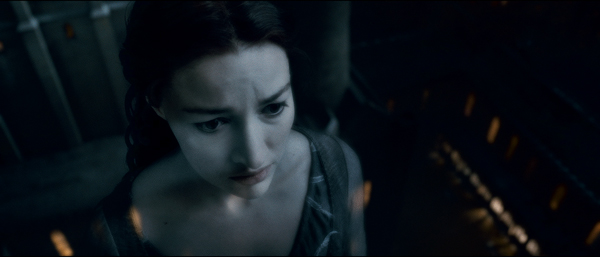 |
|
| Grey Lady In an intriguing sequence, Harry goes to meet the Grey Lady, the ghost of the witch Helena Ravenclaw of Ravenclaw Tower hoping she can give him clues in his search for one of the last Horcruxes. Baseblack designed her distinctive ghostly look. The artists began work on the sequence in June 2010 by creating post-vis for the work-in-progress cut – match moving with MatchMover the plates of Harry performing on an empty set and animating a simple model of the Grey Lady into them to help the editors block the sequence. The process was especially helpful because the director wanted the Grey Lady to make sudden, high speed movements around the environment that were hard to visualise. After the action had been approved, the camera data and line-up information from the tracked plates were exported and used to drive the motion control shoot of the Grey Lady performing on green screen. Once Baseblack had the plates from this shoot, they began developing her looks. David Yates envisioned her as a shifting, mutating character in an unstable mental state. Lead Compositor Dave Bowman designed a look with variable displacement, animation and transparency values, which could be set separately for different sections of the cut or varied dynamically during shots to show the ghost fading in and out visibility. Kate said, “Each value was set on a different node inside Nuke and could be locked or dynamically varied within the Nuke script for each shot. The levels were set shot by shot, following the dramatic beats David Yates had specified. In one shot, to show her sudden fit of rage, several different takes of the Grey Lady’s face were combined in layers to create an unsettling, shifting look. Her teeth and eyes were scaled up and pulsating veins tracked onto her forehead and shoulders.” Supernatural Moves “To signal her transition, the Grey Lady's arms and dress shredded as she picked up speed before turning into iridescent trails of light,” said Kate. “An underlying simulation of her arms, hair and dress, using MayaCloth and HairSimulation, was used as a way to create light trails inside Nuke through a procedural conversion which was hand-tweaked shot by shot. Although the double was only expected to appear for a few frames, late in production the editors needed a shot of the Grey Lady for which no footage had been captured. Fortunately she had been built at a high enough quality to appear in the shot. The artists had used their usual 3D pipeline - Photoshop for textures, modelling and rigging inside Maya - but 3D-Coat was used to re-texture her face for an extreme close-up.” Mechanical Beauty The family had to appear peaceful and serene, quite different from the Grey Lady. After trying different looks, Sequence Lead John Hardwick developed a look that softened the actors’ faces with a gentle glow. Instead of separate green screen passes, the complete sequence was shot in-camera and the characters were made transparent by rotoscoping them off the plates, repainting the background behind them and mixing them back in. This sequence included some set replacement to extend the forest further into the background, which they accomplished with layered matte paintings. Boat House The CG water needed to blend with a pool of water on-set, close to camera, and we needed to add some fiery reflections to the surface, coming from Hogwarts which is on fire behind the characters. This wider environment was matched with some very close-up work to create a CG window through which much of the boat house is seen while Harry crouches outside. After Naweed Khan modelled and textured a window to match the on-set reference, 3D artists tracked the windows into the plates - sometimes cheating the track with animation to make sure the audience could see the action clearly - before the compositors completed the shots with various distortions to reflect the warped glass. Ashes to Ashes In the climactic shot when Bellatrix is struck down, the original plate was re-sped a fair amount to make her appear frozen in space. Because the plates were all shot at 24fps, the re-speed artefacts were corrected and re-painted by hand. A digital double then takes over and quickly deforms as her body shrinks and desiccates, and animated cracks spread over Bellatrix’s face and arms. “The cracking is produced with hand-drawn textures made in Photoshop, progressively projected onto the digital double inside Maya - essentially 2D animation being implemented in 3D,” said Kate. “At the final blow, the shrunken digital double is blown apart in an explosion created by Fred Sundqvist, designed with a combination of ncloth and nparticles inside Maya to result in burning ash falling to the ground.” |
|


